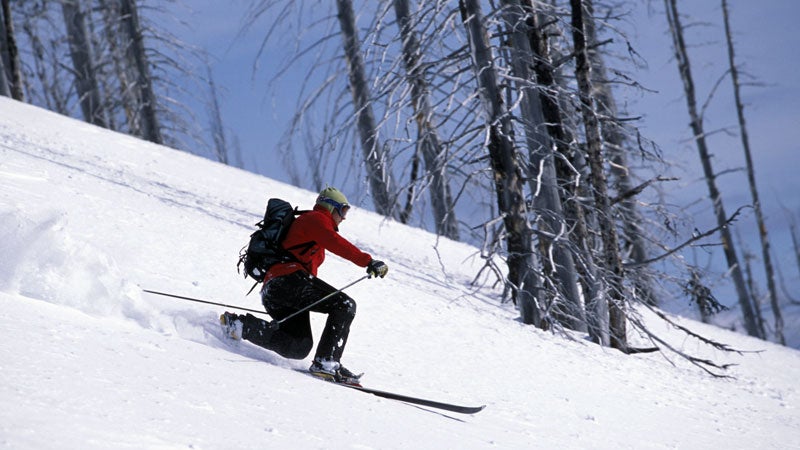According to personal trainer , if you want to make the most of your ski season, you need to bolster your lower back, core, and glutes through a rigorous power-endurance routine. Power-endurance is, essentially, the ability for your muscles to work near maximum output for a sustained period of time—a combination of short, explosive power and more drawn-out endurance. And that’s the focus of Parker’s ski program, which she uses for clients ranging from elite ski-mountaineering racers to recreational skiers at her training facility, the Compound, in Albuquerque, New Mexico.
 Athlete and personal trainer Carolyn Parker
Athlete and personal trainer Carolyn ParkerNicknamed Blitzkrieg Barbie for her blond hair and take-no-prisoners attitude, Parker, 44, is a certified CrossFit, Gym Jones, and AFAA trainer. Her background as both an accomplished skier and climber and a trainer makes her particularly appealing to winter athletes seeking a workout that yields real results. “Being a skier and a trainer, I take the knowledge base I have and apply that to each individual,” Parker says. “That’s going to result in a more specific and beneficial approach to their particular sport.”
Though no program is one-size-fits-all, there are excellent circuits that can benefit almost any snow enthusiast. Parker’s Powder Plan, below, is tailored for those who already have solid general fitness, but want to improve performance and stamina on the slopes, as well as buffer themselves against injury. Fold this into your existing routine, or build a larger routine out of it by executing every other day. It shouldn’t take more than one hour, and can be done anywhere you have access to a few weights.
Carolyn Parker’s Power-Endurance Powder Plan
After a warm-up (jog, row, or cycle for 10 minutes), complete one to four rounds of the following circuit:
Squats
Adapt the squat to mimic a ski stance, bringing the legs shoulder-width apart. As you lower into the squat, focus on keeping weight over your heels, and your toes light (you should be able to wiggle them at the bottom of the squat). Knees don’t go past the toes and nose doesn’t go past the knees. (30 to 50 reps, using bodyweight.)
Superman
Lie on the floor, facedown, with arms and legs extended. Raise your torso, arms, and legs up at the same time, while contracting your glutes, lower back, and lumbar muscles. You should be in a “Superman” position at the top of the move, the only your pelvis in contact with the ground. Release and repeat. This works the lower back and glutes, as well as the postural muscles. (30 to 40 reps; bodyweight)
Kettlebell Swings
Get into a squat position—legs shoulder-width apart, hips tilted slightly forward. Instead of lowering into the squat, snap your hips forward, bringing the Kettlebell up to eye height, arms straight the whole way, until they are parallel to the floor. Then swing the weight down, through the legs, as if tucking a football. Repeat. This exercise develops external object control and teaches people how to control their body when an external mass is pulling on it, which happens often in skiing and snowboarding. (30 to 40 reps; start light, and increase weight only when you have the move down perfectly.)
Overhead Press
Grab a kettlebell, dumbbell, or barbell. From a standing position, with your arms shoulder-width apart, palms facing forward, raise the weight(s) up from the shoulders above the head. Again, the big thing here is external object control, but you’re also starting to stabilize and condition the upper back, shoulders, and arms. (20 reps; start light, and increase weight only when you have the move down perfectly)
Feet to Hands
Lie on your back. Keeping your lower back pressed against the floor, lift your legs and hands at the same time and try to touch your feet and hands together right above your midsection (keep arms and legs straight as they go up). Don’t arch your back; stabilize your pelvis by engaging your abdominal muscles. Here, you’re training the core and erectus abdominus region in order to stabilize the pelvis while manipulating your own bodyweight. (10 reps)
Bonus: Squat Ladder
Grab a buddy and finish with a squat ladder. One person does descending reps of squats, going down from 10 to 1, while the partner holds a squat at the bottom of the position, quads parallel, no hands or elbows on legs. (Bodyweight, but you can add weights for a bigger challenge.)


